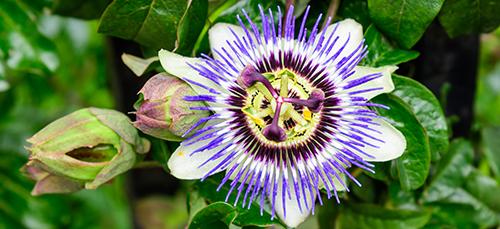
Passionflower
Passionflower (Passiflora incarnata) is a religious and romantic-sounding name for a sleep-inducing herb of the Passifloraceae family.
Its flower symbolizes the crucifixion of Christ, where its name passion came from. Passionflowers grow ten petals and sepals representing the ten faithful apostles, excluding Peter and Judas. Its central crown of filaments represents the crown, while the tendrils embody the whips. The passion flower also has three stigmas that stand for the nails of the cross and five anthers for the wound of Christ. The blue and white colors symbolize heaven and purity.
Passionflowers grow in vines, cultivated mostly for their showy and beautiful flowers. It is also grown for its edible yellow berry called Maypop. Passionflower, as a wildflower, is a larval host and wildlife food, attracting butterflies with its rich nectar production.
Passionflower is a traditional plant included in Europe’s Treasury of Medicinal Plants. The Spanish doctor Monardes initially discovered it in Peru in 1569. It reached Europe in the 18th century through Spanish explorers. American homeopathy introduced the passionflower as herbal medicine. It was used to treat shell shock during the First World War because of its sedative property.
Where Passionflower Is Found
The United States is the leading producer of passionflower for its pharmaceutical uses, followed by Germany. They are typically abundant in Europe and native to southeastern parts of America. In the wild, passionflower thrives in meadows, pastures, woodland edges, and roadsides. They flourish in most tropical and sub-tropical parts of the world, particularly in frost-free regions.
⇒ The Complete Map of Edible Plants: Find Out What You Have in Your Area! (Video)
How To Identify Passionflower
Passionflowers are thick climbers that are distinguishable by their unique flowers as they bloom in summer. It is called Maypop because the plants often pop out of the ground in May after it dies in the frost during winter.
- Leaves. Passionflower is a deciduous plant with green leaves. The leaves turn to gold or yellow in winter. They are simple and are arranged alternately on the stem. Each leaf is about 3 to 6 inches, lobed, and serrated with a prominent gland on the leaf stalk. The underside of a passionflower leaf has fine hairs.
 Flowers. The unique blossom of the passionflower consists of five large sepals that are white inside and green on the outside. They grow alternate with five petals of similar shape and size. The petals are white with fine pinkish threads and a purple tinge grows out from the center. Three more oval and serrated petals grow from the base forming a cup. From the center, grows an egg-shaped ovary with three styles and five filaments growing in a curve.
Flowers. The unique blossom of the passionflower consists of five large sepals that are white inside and green on the outside. They grow alternate with five petals of similar shape and size. The petals are white with fine pinkish threads and a purple tinge grows out from the center. Three more oval and serrated petals grow from the base forming a cup. From the center, grows an egg-shaped ovary with three styles and five filaments growing in a curve.- Fruits and Seeds. When the ovary matures, it develops into a yellowish-green berry and turns intense yellow to orange when ripe. The fruit is fleshy, containing the seeds folded over each other. The seeds are brown and pop when crushed.
- Roots. Passionflowers have a large and thick root system with extensive fibrous rhizomes. The roots can grow to about 33 ft deep and spread away from the parent plant to produce new vines.
- Stem. The tendrils or vines of the passionflower are skinny. It climbs along trellises or crawls on the ground. A single vine can grow to a length of about 25 ft. The vines are smooth and possess many tendrils.⇒ Plant Identification Guide – 400 Wild Plants That You Can Forage For (Video)
The Passiflora incarnata is just one of the hundred species of the Passifloraceae family. The plant is known by other names such as apricot vine and wild passion vine.
Passiflora incarnata has no true subspecies, although it is a common name for the similar plant specie in its genus. It is closely related to the passion fruit (Passiflora edulis), which is popular in South America and grows purple pulpy fruit.
How To Grow Passionflower
It is possible to propagate passionflower from its root and softwood cutting or seeds. Seeds are commercially available but have a low germination rate and need proper care to grow. Once the plant is established, it is quite tolerant to climate conditions and easy to care for.
Passionflowers do well in moist and well-drained soil and area where they can get plenty of sunlight.
Most people cultivate passionflower for ornamental purposes. This vine can get quite invasive, and it may quickly eliminate other plants in the garden. Growing passionflower needs consistent care to keep its growth in check.
Propagating Passionflower from Seeds
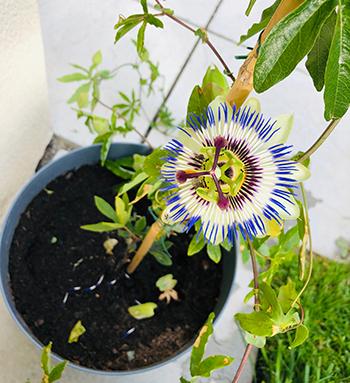 Grow passionflower by soaking the seeds in tepid water overnight for the seed coat to soften. Discard floating seeds for these are not viable.
Grow passionflower by soaking the seeds in tepid water overnight for the seed coat to soften. Discard floating seeds for these are not viable.
If they are not soaked before sowing, it may take about one month for the seeds to germinate.
Sow the seeds on the surface of a damp potting mix, but do not cover it with soil. Cover the pot with plastic for it to retain its moisture.
Keep it at a temperature of 25⁰C (77⁰F) until the seeds germinate from about 10 to 20 days.
After the seeds sprout, keep the pot away from direct sunlight and moisten the soil regularly. Introduce the seedlings to outdoor conditions slowly to harden them. Increase the amount of sun it could get daily until after several sets of leaves appear. The passionflower seedlings are then ready for transplanting. Transfer the plant to a large pot that can accommodate its roots as it grows.
Propagating Passionflower from Cuttings
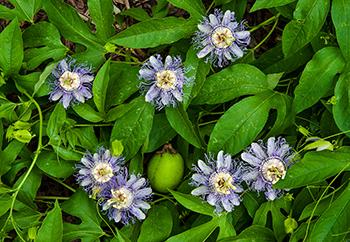 If you already have a passionflower, propagating it through its wood and root cutting is the quickest and easiest way. The vines that touch the soil can develop new roots to grow a new plant.
If you already have a passionflower, propagating it through its wood and root cutting is the quickest and easiest way. The vines that touch the soil can develop new roots to grow a new plant.
To grow passionflower from cutting, prune the plant about 4 to 6 inches below a node. Strip off its bottom leaves and dip the end in a rooting hormone. Insert the cutting about ½ to 1-inch deep in well-draining potting soil.
Water the soil lightly and cover the pot with a plastic bag, leaving small slits at the top. Place it in a shady area and keep the pot warm and moist until passionflower roots grow.
You can also dig up a passionflower root, divide it, and plant them in well-draining soil.
⇒ Stopped Spending Money At The Pharmacy By Growing These 10 Plants (Video)
Plant Care and Maintenance
An established passionflower requires little maintenance, although they may not look at their ideal best when overwintering. The plant enjoys the warmth, but too warm and humid conditions attract pests like scale, aphids, spider mites, or white flies. Leaf spot is also quite common, but you can get rid of these diseases by using fungicide or insecticide.
Root rot can occur in poorly draining soil. Passionflower is an aggressive grower, but here are a few guidelines to keep them growing and blooming at their best:
- Full sun to partial shade
 Well-draining but moist and rich soil
Well-draining but moist and rich soil- Deep watering after planting; two watering every week in the growing seasons
- Warm weather with moderate humidity
- Balanced general-purpose fertilizer every four to six weeks
- Deadheading and pruning in early spring
How To Harvest Passionflower
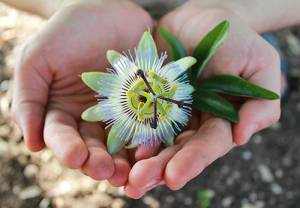 You can harvest the passionflowers right before they become fruits in late spring and early summer. Choose the ones with wide open flowers and pull them off from the vine. The best time for doing it is in the morning, but only after the dew has evaporated.
You can harvest the passionflowers right before they become fruits in late spring and early summer. Choose the ones with wide open flowers and pull them off from the vine. The best time for doing it is in the morning, but only after the dew has evaporated.
You may also cut the flowering stem off from the vine using shears.
The passionflower fruit is ripe when they are intensely yellow. Compared to the purple passionfruit, passionflower produces large, yellow, juicier, and less acidic fruits. They also have a rich aroma and flavor than the purple ones.
Harvest the fruit just before they become fully ripe.
What Passionflower Is Good For And Natural Remedies Made From It
The healing properties of passionflower contribute greatly to traditional and modern healing practices. It is highly valuable with its sleep-inducing ability to bring relaxation and relief from anxiety and insomnia. Passionflower can increase the gamma-aminobutyric acid (GABA) in the body, which is responsible for a powerful sedative action.
Passionflower can reduce the emotional symptoms of drug withdrawal. And because it can increase GABA in the body, it can effectively manage mood disorders without affecting the body’s activity. Thus, it does not interfere with work performance, unlike synthetic therapies.
Children with ADHD are often treated with stimulants, but alternative herbs are used to supplement the treatment. Passionflower is among the herbs used for children and adolescents who cannot tolerate or do not respond well to ADHD treatment.
Passionflower is anti-spasmodic, and it can increase serotonin levels. Thus, it was traditionally used for the treatment of epilepsy, neural pain, and other seizure disorders.
Conversely, using passionflower can decrease the insulin level for the benefit of diabetic patients.
Passionflower is also beneficial for reducing systolic blood pressure. It aids people with hypertension and prevents the accumulation of toxins in the body. It enhances the anti-carcinogenic activity to ward off cancer, particularly in the lung and chest regions.
Passionflower is a useful herb for women with menopausal problems. It effectively cures symptoms associated with menses, including hot flashes and night sweats. It is also an excellent herb for relieving premenopausal symptoms.
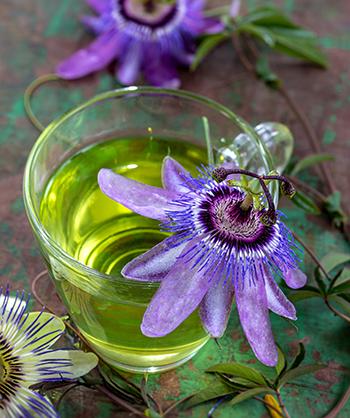
The herbal benefits of passionflower are considered for the treatment and prevention of the following ailments:
- Anxiety, stress, and sleep problems
- Heart rhythm problems
- Menopausal symptoms
- ADHD
- Hemorrhoids
- Pain and inflammation
- Burns and skin problems
- Neural pain, seizures, epilepsy
- High blood pressure
- Cancer
- Asthma
What Parts Of Passionflower Are Used For Remedies?
The dried leaves, stems, shoots, flowers, and all aerial parts of the passionflower are used for herbal remedies.
It is used as an infusion, tea, liquid extract, or as a food garnish. Passionflower is also used as an essential oil for children with ADHD.
The most potent method of consuming passionflower is using its tincture.
⇒ Formulated to help you fall asleep faster and stay asleep longer, my Sleep Blend Tinctureis a convenient, easy-to-use blend of hops, valerian, German chamomile, passionflower, and magnesium glycinate. Visit the apothecary today to read about these outstanding herbs for promoting deep, rejuvenating sleep.
Mood-Boosting Iced Passionflower and Chamomile Tea
Ingredients
- 32 fl oz water
- 2 tbsp passionflower
- 1 bag of chamomile tea
- Honey, to taste
Steps
- Bring the water to a boil.

- Add the passionflowers and chamomile tea to a mason jar. Pour over hot water, and steep for 10 to 15 minutes.

- Stir in honey according to taste and allow it to cool. Chill the tea for a few hours and add plenty of ice before enjoying.

How to use this remedy
You can use this tea anytime, but most preferably before bedtime to gain better sleep and relief from any pain.
If using an herbal supplement, the safe dosage of passionflower extract is between 250 to 900 grams per dose.
What Plants Resemble Passionflower
Passionflower is a unique plant by itself. But here are the varieties of the Passiflora often mistaken as one for the others.
| Features | Passionflower (Passiflora incarnata) | Passion Fruit (Passiflora edulis) | Blue Passionflower (Passiflora caerulea) |
|---|---|---|---|
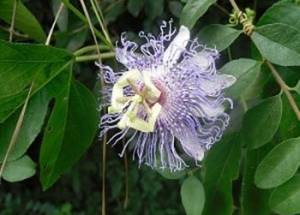 | 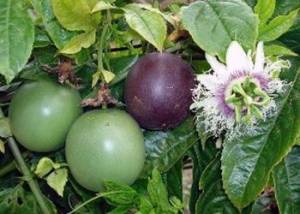 | 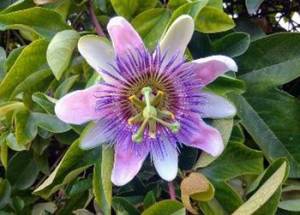 |
|
| Size | Up to 23 ft long | 1.5 to 6.5 ft long | 20 to 30 ft long |
| Leaves | Green to gold/yellow; simple; alternate; lobed; serrated; hairy on the underside | Alternate; horseshoe-shaped; glossy green/yellow; leathery | Green/ dull green-blue; five-lobed; smooth edges; alternate; simple; shiny; hairless; toxic foliage |
| Flowers | Purple and white; round; with inner crown of filament; egg-shaped ovary | Solitary; pale green petals with purple tinge; inner filaments; recurved styles | Solitary; saucer-shaped with 10 tepals; white to whitish-pink; blue filaments; purple styles |
| Fruits/Seeds | Egg-shaped; yellowish-green to yellow/orange; fleshy; edible; brown seeds | Oval-shaped; yellow to purple; juicy and pulpy meat; numerous dark brown seeds | Green to orange; egg-shaped; fleshy red pulp; silvery-brown seeds; unripe fruits are toxic |
| Stem | Climbing; tendrils; smooth and hairless; skinny | Climbing; herbaceous; hairless | Twining vine and tendrils; green and brown; hairless; woody |
| Scent | Sweet fruit aroma | Fruity floral | Strong smelling with hints of decay |
Warnings And Cautions
Passionflower is safe in small amounts, but it was removed from the market because of a lack of safety testing. Check with your doctor before taking any herbal supplements, including passionflower.
While they are likely safe in food amount, there are limitations when passionflower is taken as medicine. Do not take more than the recommended dosage and length of use in the packaging. As an herbal tea, passionflower is possibly safe when taken for up to 7 days or eight weeks as medicine.
Passionflower is not recommended for pregnant and breastfeeding women. People with medical conditions and other medications should not use passionflower without the doctor’s knowledge. It is likewise safe to check with your doctor when using it as medicine for children, especially those with ADHD for the proper dosage.
You may also:
 10 Teas You Should Avoid Drinking Before Bedtime
10 Teas You Should Avoid Drinking Before Bedtime
75+ DIY Projects: No. 5 Will Take You by Surprise! (Video)
Soothing Medicinal Herbs for Deep Rest

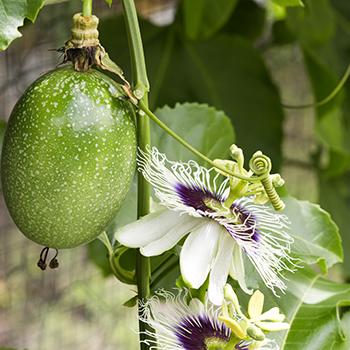 Flowers. The unique blossom of the passionflower consists of five large sepals that are white inside and green on the outside. They grow alternate with five petals of similar shape and size. The petals are white with fine pinkish threads and a purple tinge grows out from the center. Three more oval and serrated petals grow from the base forming a cup. From the center, grows an egg-shaped ovary with three styles and five filaments growing in a curve.
Flowers. The unique blossom of the passionflower consists of five large sepals that are white inside and green on the outside. They grow alternate with five petals of similar shape and size. The petals are white with fine pinkish threads and a purple tinge grows out from the center. Three more oval and serrated petals grow from the base forming a cup. From the center, grows an egg-shaped ovary with three styles and five filaments growing in a curve.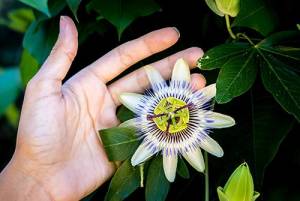 Well-draining but moist and rich soil
Well-draining but moist and rich soil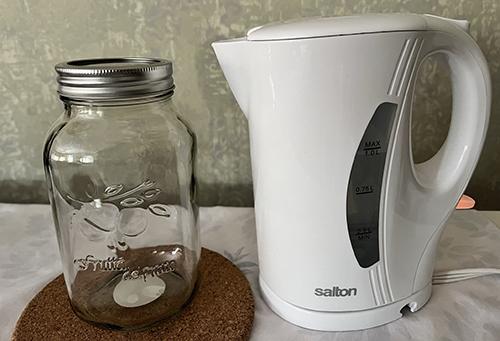
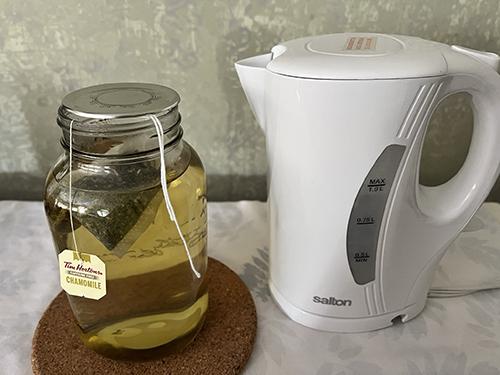
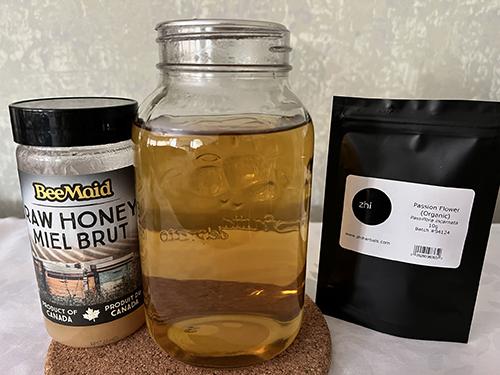
Every time I use it for sleep my sight is blurry the next day. Is there an explanation for this phenomena.
What is the best way to use it for high blood pressure?
Hi Marnie,
Passion flower has an antioxidant enzyme that helps lower blood pressure.
You can add dried passionflower to boiling water to create an herbal tea. You can find dried passionflower or prepackaged tea at many health food stores. You can also find liquid extracts, capsules, and tablets.
General dosing
– Dried extract: Take 0.25 to 2 grams by mouth three times a day.
– Tea: Take 0.25 to 2 grams extract per 150 ml of water, by mouth two to three times a day.
– Liquid extract: Take 0.5 to 1 ml by mouth three times a day.
However, passion flower should be used with caution with blood pressure medications like enalapril (Vasotec), losartan (Cozaar), atenolol (Tenormin), amlodipine (Norvasc), and furosemide (Lasix).
Always consult a specialist or your own doctor for more information.
Many blessings and good health!
Juice from the pulp mix with water and ice add sugar at taste because it is sour not to sweet, be very careful it you drink to much your blood pressure will got to low my grandfather always drink this for his blood pressure it is effective and delicious.
I came these two Randomized trials few months ago . I tried the dried passion fruit blossoms tea with Lemon grass and Oregano, Ashwaghandah, Mints, and Basil . The effect is magical on my sleep problem and i take it with moderation .
https://pubmed.ncbi.nlm.nih.gov/31714321/ , https://pubmed.ncbi.nlm.nih.gov/21294203/
NB: I realize two Randomized clinical trials are not enough to prove the effects but i have personally used the blossoms and they work.
Thank you very much
I also would like to know how to use for high blood pressure
Hi Barbara Lee,
Passion flower has an antioxidant enzyme that helps lower blood pressure.
You can add dried passionflower to boiling water to create an herbal tea. You can find dried passionflower or prepackaged tea at many health food stores. You can also find liquid extracts, capsules, and tablets.
General dosing
– Dried extract: Take 0.25 to 2 grams by mouth three times a day.
– Tea: Take 0.25 to 2 grams extract per 150 ml of water, by mouth two to three times a day.
– Liquid extract: Take 0.5 to 1 ml by mouth three times a day.
However, passion flower should be used with caution with blood pressure medications like enalapril (Vasotec), losartan (Cozaar), atenolol (Tenormin), amlodipine (Norvasc), and furosemide (Lasix).
Always consult a specialist or your own doctor for more information.
Many blessings and good health!
I see that the root grows 33 feet deep! Is that really true? I suspect this to be a typo but would like clarity. I want to put a barrier around the plant root system to keep it from taking over the yard. Any feedback would be appreciated.